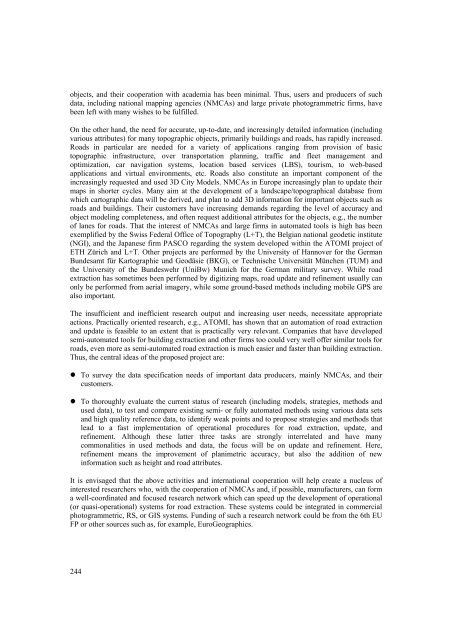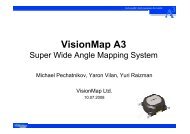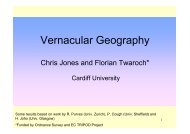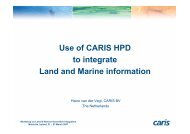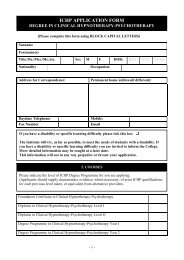EuroSDR Projects - Host Ireland
EuroSDR Projects - Host Ireland
EuroSDR Projects - Host Ireland
You also want an ePaper? Increase the reach of your titles
YUMPU automatically turns print PDFs into web optimized ePapers that Google loves.
objects, and their cooperation with academia has been minimal. Thus, users and producers of such<br />
data, including national mapping agencies (NMCAs) and large private photogrammetric firms, have<br />
been left with many wishes to be fulfilled.<br />
On the other hand, the need for accurate, up-to-date, and increasingly detailed information (including<br />
various attributes) for many topographic objects, primarily buildings and roads, has rapidly increased.<br />
Roads in particular are needed for a variety of applications ranging from provision of basic<br />
topographic infrastructure, over transportation planning, traffic and fleet management and<br />
optimization, car navigation systems, location based services (LBS), tourism, to web-based<br />
applications and virtual environments, etc. Roads also constitute an important component of the<br />
increasingly requested and used 3D City Models. NMCAs in Europe increasingly plan to update their<br />
maps in shorter cycles. Many aim at the development of a landscape/topographical database from<br />
which cartographic data will be derived, and plan to add 3D information for important objects such as<br />
roads and buildings. Their customers have increasing demands regarding the level of accuracy and<br />
object modeling completeness, and often request additional attributes for the objects, e.g., the number<br />
of lanes for roads. That the interest of NMCAs and large firms in automated tools is high has been<br />
exemplified by the Swiss Federal Office of Topography (L+T), the Belgian national geodetic institute<br />
(NGI), and the Japanese firm PASCO regarding the system developed within the ATOMI project of<br />
ETH Zürich and L+T. Other projects are performed by the University of Hannover for the German<br />
Bundesamt für Kartographie und Geodäsie (BKG), or Technische Universität München (TUM) and<br />
the University of the Bundeswehr (UniBw) Munich for the German military survey. While road<br />
extraction has sometimes been performed by digitizing maps, road update and refinement usually can<br />
only be performed from aerial imagery, while some ground-based methods including mobile GPS are<br />
also important.<br />
The insufficient and inefficient research output and increasing user needs, necessitate appropriate<br />
actions. Practically oriented research, e.g., ATOMI, has shown that an automation of road extraction<br />
and update is feasible to an extent that is practically very relevant. Companies that have developed<br />
semi-automated tools for building extraction and other firms too could very well offer similar tools for<br />
roads, even more as semi-automated road extraction is much easier and faster than building extraction.<br />
Thus, the central ideas of the proposed project are:<br />
To survey the data specification needs of important data producers, mainly NMCAs, and their<br />
customers.<br />
To thoroughly evaluate the current status of research (including models, strategies, methods and<br />
used data), to test and compare existing semi- or fully automated methods using various data sets<br />
and high quality reference data, to identify weak points and to propose strategies and methods that<br />
lead to a fast implementation of operational procedures for road extraction, update, and<br />
refinement. Although these latter three tasks are strongly interrelated and have many<br />
commonalities in used methods and data, the focus will be on update and refinement. Here,<br />
refinement means the improvement of planimetric accuracy, but also the addition of new<br />
information such as height and road attributes.<br />
It is envisaged that the above activities and international cooperation will help create a nucleus of<br />
interested researchers who, with the cooperation of NMCAs and, if possible, manufacturers, can form<br />
a well-coordinated and focused research network which can speed up the development of operational<br />
(or quasi-operational) systems for road extraction. These systems could be integrated in commercial<br />
photogrammetric, RS, or GIS systems. Funding of such a research network could be from the 6th EU<br />
FP or other sources such as, for example, EuroGeographics.<br />
244


